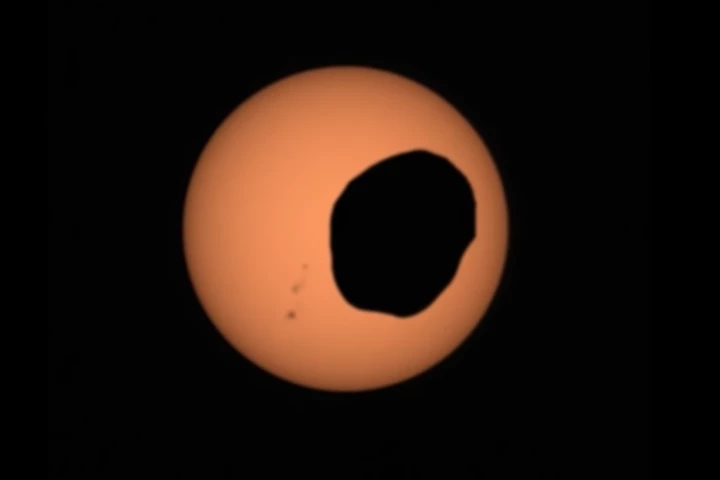Phobos
-
NASA's Perseverance rover has used its advanced camera system to capture the clearest view yet of a solar eclipse on Mars, which will aid scientists in better understanding the behavior of its doomed moon, Phobos.
-
ESA's Mars Express spacecraft has captured a rare movie of the Martian moon Phobos. The moon is set to be the target of an international mission to survey the Red Planet’s two natural satellites, and return a surface sample to Earth.
-
NASA has released new images of the Martian moon Phobos that could help reveal the origin of the enigmatic satellite. The data is also useful for scientists choosing the safest landing zones for robotic, and potentially even crewed missions to the Martian moon.
-
A solar eclipse is an amazing sight to behold, and it's an astronomical event that's not limited to Earth. NASA's Curiosity rover has captured images of Mars' two moons, Phobos and Deimos, as they passed between the Red Planet and the Sun.
-
Scientists have long debated the cause of the distinctive grooves on the surface of Mars' moon Phobos. One leading theory has it that the lines are signs of structural failure. But a competing idea suggests the marks may be superficial, caused simply by rolling stones on Phobos' surface.
-
The Martian moons Phobos and Deimos may have been created in the aftermath of a cataclysmic collision between early Mars and an object with a mass somewhere between that of the dwarf planet Ceres, and the asteroid Vesta.
-
While a lot of attention has been focused on Mars thanks to the rovers that are heading out there in 2020, the Red Planet's tiny moon Phobos has been relatively overlooked. Now the THEMIS camera on NASA's Mars Odyssey orbiter has captured a heat map of what a day looks like on the oddly-shaped moon.






